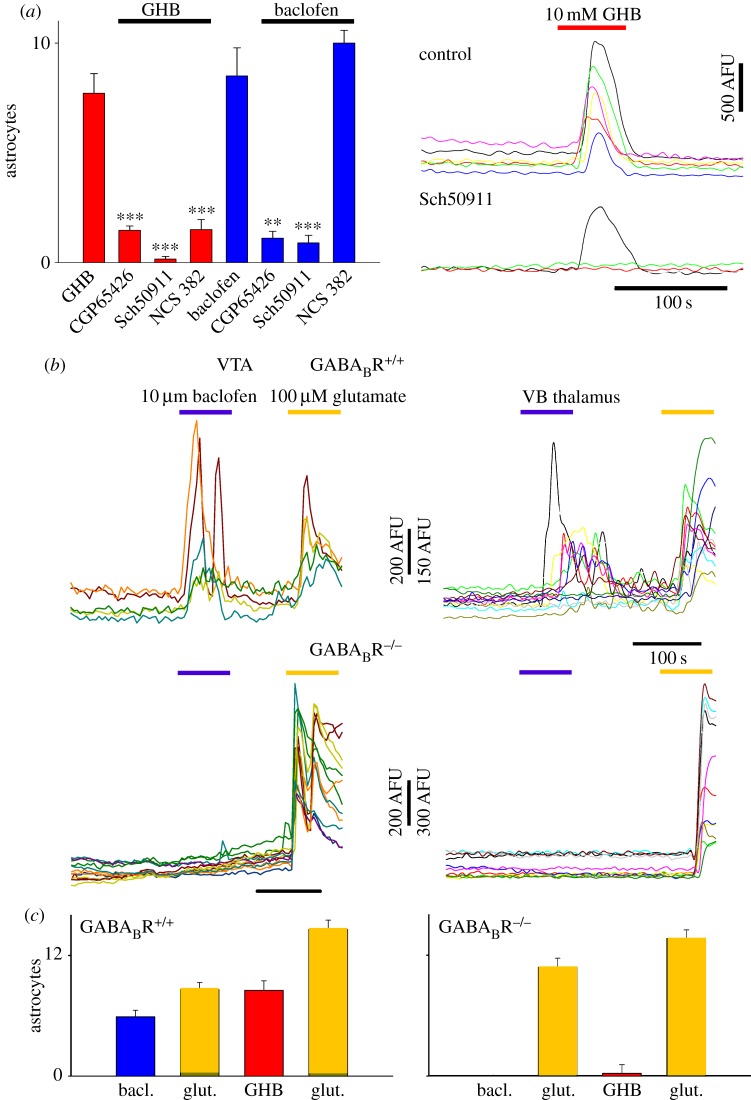Figure 2.
GHB and baclofen elicit astrocytic [Ca2+]i elevations acting via GABABRs. (a) Summary bar graphs showing the number of astrocytes responding to a brief bath-application of 10 mM GHB and 10 µM baclofen alone or together with one of different GABABR antagonists (as indicated). Astrocyte responses to both drugs are abolished by the two GABABR antagonists, CGP65426 and Sch50911, whereas the GHB effect, but not that of baclofen, is also inhibited by the putative GHB receptor antagonist NCS382. Example fluorescence traces are shown on the right. (b) Fluorescence traces from experiments in mouse VTA slices (left column) show that astrocytes from WT littermates respond to baclofen, whereas in GABABR KO mice baclofen responses are absent though astrocytes still respond to a 100 µM glutamate application. Similar results are seen in the VB thalamus (right column), indicating common mechanisms for astrocyte [Ca2+]i elevations in different brain areas. (c) Summary bar graphs of similar experiments as in (b) showing number of responding astrocytes conducted in VTA for WT (left) and GABABR KO (right) astrocytes with GHB and baclofen. (Online version in colour.)

